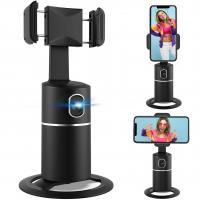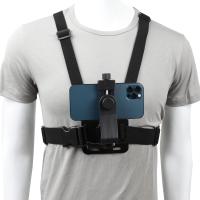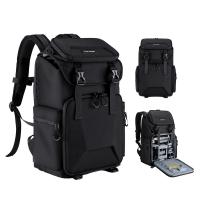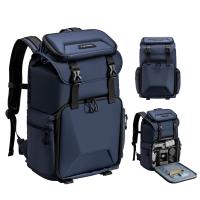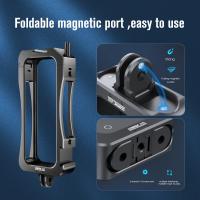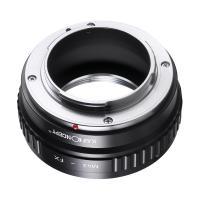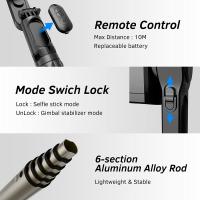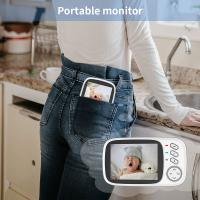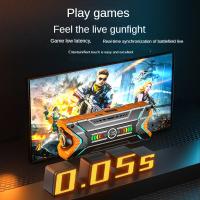Can You Use Your Phone As A Projector?
In today's fast-paced digital world, the ability to share content quickly and efficiently is more important than ever. Whether you're giving a business presentation, sharing photos with friends, or watching a movie, having a portable projector can be incredibly useful. But what if you could use a device you already own—your smartphone—as a projector? This article will explore the feasibility, methods, and practical applications of using your phone as a projector.
The Feasibility of Using Your Phone as a Projector
First and foremost, it's essential to understand that while smartphones are incredibly versatile, they are not designed to function as projectors out of the box. However, with the right accessories and applications, you can transform your phone into a makeshift projector. The feasibility of this depends on several factors, including the type of phone you have, the quality of the projector accessory, and the environment in which you plan to use it.
Methods to Use Your Phone as a Projector
1. DIY Projector with a Shoebox and Magnifying Glass
One of the most popular DIY methods involves using a shoebox, a magnifying glass, and some basic crafting skills. Here’s a step-by-step guide:
1. Materials Needed: A shoebox, a magnifying glass, a smartphone, black paper, tape, and a utility knife.
2. Preparation: Cut a hole in one end of the shoebox to fit the magnifying glass. Secure the magnifying glass in place with tape.
3. Blackout: Line the inside of the shoebox with black paper to minimize light leakage.
4. Phone Placement: Place your smartphone inside the box, facing the magnifying glass. You may need to adjust the distance to get a clear image.
5. Projection: Darken the room and project the image onto a white wall or screen.
While this method is cost-effective and fun to build, it has limitations in terms of image quality and brightness.
2. Portable Projector Accessories
Several companies manufacture portable projector accessories that can be connected to your smartphone. These devices are designed to be compact and easy to use. Here are some popular options:
1. Pico Projectors: These are small, portable projectors that can connect to your smartphone via HDMI, USB, or wireless connections. They offer better image quality and brightness compared to DIY methods.
2. Smartphone Projector Cases: Some companies offer phone cases with built-in projectors. These cases are convenient but may not offer the same quality as standalone pico projectors.
3. Wireless Streaming to a Smart Projector
If you already own a smart projector, you can wirelessly stream content from your smartphone. Most modern projectors support screen mirroring technologies like Miracast, AirPlay, or Chromecast. Here’s how you can do it:
1. Connect: Ensure both your smartphone and projector are connected to the same Wi-Fi network.
2. Screen Mirroring: Use the screen mirroring feature on your smartphone to connect to the projector.
3. Projection: Once connected, you can project any content from your phone onto a larger screen.
Practical Applications
1. Business Presentations
Using your phone as a projector can be incredibly useful for business presentations. Whether you're in a small meeting room or a larger conference hall, having a portable projector can make it easier to share slides, videos, and other content. This can be particularly beneficial for professionals who travel frequently and need a lightweight, portable solution.
2. Educational Purposes
Teachers and educators can also benefit from using their phones as projectors. Whether you're in a classroom or conducting a workshop, being able to project educational content can enhance the learning experience. This is especially useful for impromptu sessions where traditional projectors may not be available.
3. Home Entertainment
For those who love watching movies or playing games, using your phone as a projector can transform your living room into a mini-theater. While the image quality may not match that of high-end home theater systems, it offers a convenient and cost-effective alternative.
4. Social Gatherings
Sharing photos and videos during social gatherings can be more enjoyable when projected onto a larger screen. Whether it's a family reunion or a casual get-together with friends, using your phone as a projector can make the experience more interactive and fun.
Limitations and Considerations
While the idea of using your phone as a projector is appealing, there are several limitations and considerations to keep in mind:
1. Image Quality: The image quality of DIY projectors and some portable accessories may not be as high as traditional projectors. Factors like resolution, brightness, and contrast can affect the viewing experience.
2. Battery Life: Projecting content can drain your phone's battery quickly. It's advisable to have a power source nearby or use a portable charger.
3. Environment: The effectiveness of your phone as a projector can be influenced by the environment. A dark room with a white wall or screen will yield the best results.
4. Compatibility: Ensure that the projector accessory or smart projector is compatible with your smartphone. Check for supported connections and screen mirroring technologies.
In conclusion, while smartphones are not inherently designed to function as projectors, there are several methods and accessories available that can help you achieve this functionality. Whether you opt for a DIY solution, a portable projector accessory, or wireless streaming to a smart projector, each method has its own set of advantages and limitations. By understanding these factors, you can make an informed decision on the best way to use your phone as a projector.
From business presentations to home entertainment, the ability to project content from your smartphone can offer a range of practical applications. However, it's essential to consider the limitations and ensure you have the right setup to achieve the best results. With the right approach, you can transform your smartphone into a versatile tool for sharing and enjoying content on a larger scale.

